
The pin is the first and most important component in a roller chain. It works in conjunction with the bushing to provide wear resistance and strength to the whole assembly. Depending on the quality level, pins can be thru-hardened, case-hardened, or heat-treated.
Pins are also available in stainless steel or nickel-plated varieties. The pin and bushing design is the key to providing a long-lasting, strong roller chain.
Bushings are a crucial component for performance and wear life. Bushings are available as solid or split configurations for both ANSI and ISO standard roller chains. Made from high-strength, low-friction materials, bushings help to reduce wear on the inner link plates and pins, extend chain life, and improve overall performance.
In order to ensure maximum service life, it is important to select the right bushing for the application and to properly install and maintain the chain.
Solid Bushings vs Split:
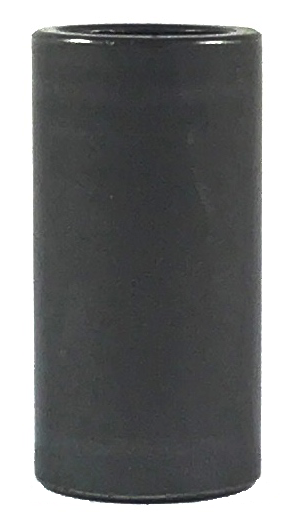

Solid bushings provide the best performance because of their seamless design. This promotes smoother operation with less friction, even if dust, dirt, or other debris get into the roller chain.
A solid bushing will wear at a slower rate than a split. Solid bushings are typically used in heavy-duty applications where there is a high load or impact, while split bushings are typically used in the majority of roller chains and are the most common design for chain manufacturers.
Split bushings can keep the cost of roller chains down but may cause premature bushing deformation or wear due to added friction and possible stretching. When installing bushings, it is important to press them into place using a press or arbor press, taking care not to damage the bushing or the surrounding components. Once installed, regular inspections should be performed to ensure that the bushings are still properly seated and that there is no excessive wear.
Economy Plus series roller chains use the split bushing design for those needing a light-duty chain, while most of the General Duty Plus series chains use the solid bushing design for moderate applications. The
Premier Series chains only use solid bushings and provide other benefits for extreme-duty applications.
Outside of the bushing on a roller chain is the roller. This is the part of the chain that engages with the sprocket and is the first line of defense against wear. Most of our roller chains are manufactured using solid rollers, which helps to prevent overall wear and tear. Due to the amount of metal-on-metal contact, proper lubrication is a must.
We offer a wide range of
roller chain lubricants that are specifically designed for different applications. Lubricants include general-application lubricants as well as specific food-grade lubricants designed for use in food-processing applications.
Roller chain side plates are used to hold the internal components in and add strength. There is a set of inside side plates that have press-fitted bushings inserted with the rollers over the bushings (this is known as a roller link), and then a set of outside plates with riveted or cottered pins in them that go through the bushings to hold in the roller link; these are known as pin links.
Our Economy Plus and General Duty Plus roller chains are manufactured using heat-treated and shot-peened side plates for added strength and less fatigue. The Premier Series roller chains are heat-treated and shot-peened as well, but they are wide-waste plates; this drastically increases strength and shock absorption in applications that stop or start often.
Roller Chain Connecting Link
are used to connect two straight links together. Connecting links have one connector at each end and are flush with the outer surface of the chain. There are two different styles of roller chain connecting links, also commonly known as master links. Spring-clip styles, such as the image on the left, are typically used with
ANSI roller sizes #25–#80 and ISO chain sizes 03B–16B, but cotter-style links are also available for those sizes upon request. While cotter-pin or, connecting-link style and is typically used for ANSI sizes #100–#240 and ISO chain sizes 20B–56B.
A
roller chain offset link, also known as a half link, is a key component in the chain. It consists of a pin with cotter, bushing, roller, and two offset side plates. This design allows the chain to be installed without having to remove one of the drive sprockets, which can be helpful when servicing the chain.
Economy Plus and General Duty Plus offset links are manufactured with a split bushing and solid roller, while Premier Series offset links feature a solid roller and solid bushing.
Roller links, which are also commonly known as inside links, consist of two bushings, two rollers, and two inside side plates.
Economy Plus and General Duty Plus roller links are manufactured with split bushings and solid rollers, while Premier Series roller links are manufactured with solid rollers and solid bushings.
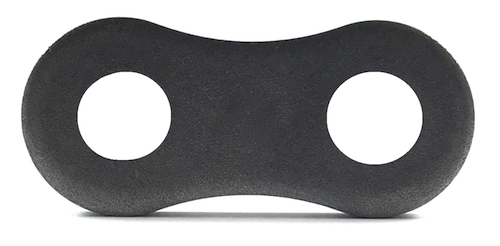
First, we start with a heat-treated inside side plate.
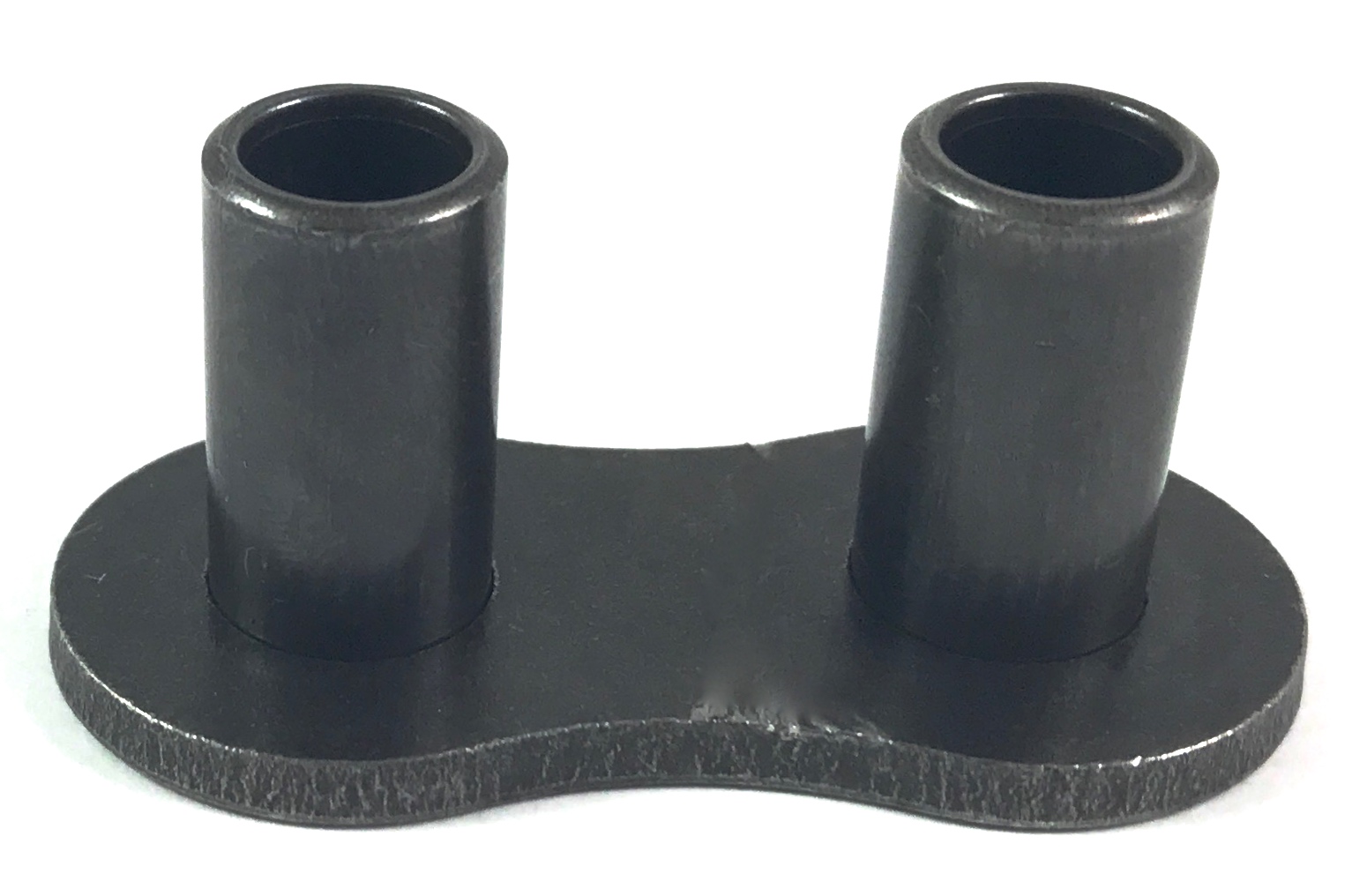
Next, there are two bushings that are pressed into the inside side plate.
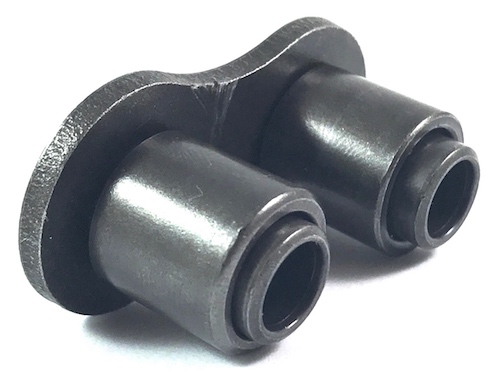
Then rollers are placed over the bushings.
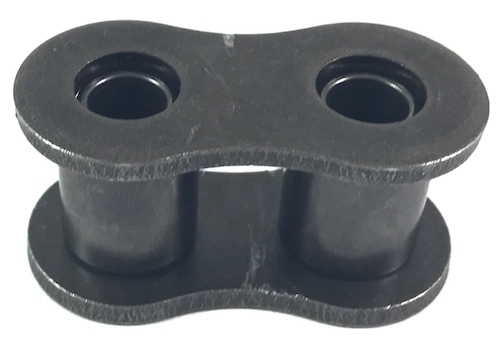

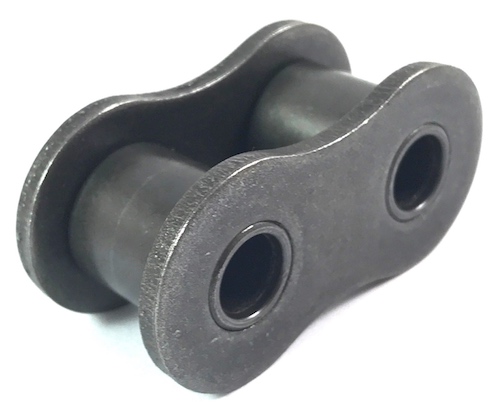
Then an additional inside side plate is pressed onto the bushings, resulting in a complete inside link, also known as the roller link.
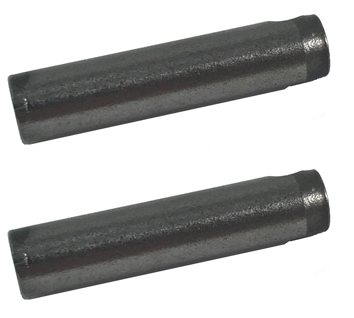
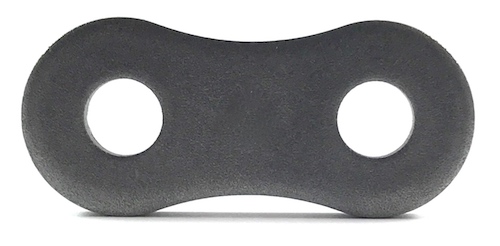

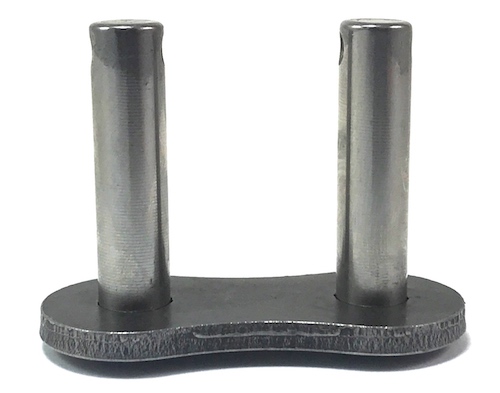
Next, we use two pins and an outside side plate to create an almost complete outside link, which is called the pin link.


The almost complete pin link assembly is then inserted into two roller links and another outside side plate is put into position to be pressed down to complete the pin link and secure the two roller links.

Assembling a roller chain is a fairly simple process, but it's one that requires careful attention to detail. Once a section of chain is pressed, the next step is to repeat the process until the chain is assembled to the desired length.
The
standard roller chains we supply are typically available in 10-ft boxes, 50-ft reels, and 100-ft reels. However, if you have specific needs or requirements, we may be able to provide a custom solution.
For more information or to get a quote on roller chain or roller chain parts, please contact us, and we will be happy to assist you.
Phone: (407) 347-3519
Email: sales@usarollerchain.com



